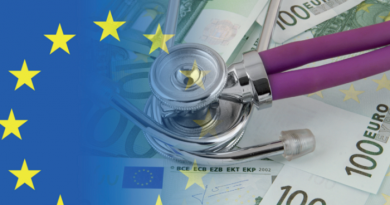The Latest Technological Developments in Cosmetic Dentistry
X-guide technology is one of the significant advancements in the cosmetic dentistry sector. It has been around since the early 1970s but has undergone several developments in the last decade. As a result, creating customized dental implants that fit perfectly in the mouth is also possible. Other significant advancements in Littleton Dentistry for cosmetic dentistry include 3D printing and dental lasers.
3D printing
In recent years, 3D printing technology has become more affordable, making it a good fit for dental clinics. This technology can create virtually anything, from dental models to surgical instruments. All you need are a digital file and the appropriate materials. The future of 3D printing in the dental industry is bright, but it will take some time before the technology can be used in dentistry.
CAD software is essential for the development of 3D printers. The software allows dentists to simulate the appearance and function of dental objects before printing them. CAD software is standard in manufacturing, industrial design, and engineering and is also found in dental labs. Today, CAD software is being integrated into many dental surgeries. This software allows technicians to focus on the more artistic aspects of the manufacturing process. In the dental field, 3D printers can create complex grafts in a fraction of the time.
Cone beam CT
One of the most advanced technologies available in cosmetic dentistry is cone beam computed tomography, or CT, scan. Cone beam CT creates three-dimensional images of the teeth and their surrounding structures, including bone structures. Because it is fast and nonintrusive, cone beam CT scans are a comfortable procedure that requires minimal time. In addition, the scan itself is not painful and can be performed in 60 seconds, and patients can typically resume normal activities immediately afterward.
The cone-beam CT scan technology is very similar to traditional panoramic x-rays. Whether a patient is standing or sitting, the scanner arm rotates around the patient’s head and captures multiple images of the teeth from multiple angles. These images are combined to create a 3D image. The CBCT scanner is not used to diagnose cavities, and traditional dental X-rays will still be needed. However, these CBCT scans have several advantages, including reduced radiation exposure and better results.
Dental lasers
Dental lasers are precision instruments that remove unwanted tissue without damaging healthy tissue. Unlike traditional dental tools, dental lasers require no incisions, reduce bleeding, and offer several benefits, including less pain and faster recovery.
There are many types of dental lasers available. The diode laser is a great example, allowing the dentist to remove excess tissue with a minimal incision. As technology improves, more advanced products will be available in the market. In 2018, the soft tissue segment accounted for 64% of the global dental laser market. It is predicted that the number of lasers will accelerate.
Intraoral camera
The use of an intraoral camera is an excellent tool for patients seeking a variety of dental services. The camera can view hidden dental problems, such as cracks in old amalgam fillings. This tool is also helpful for insurance companies, as it can show insurers what dental treatments are necessary for detail. In addition, the camera can record images and send them to insurance companies for reimbursement. The benefits of using an intraoral camera for cosmetic dentistry are numerous.
The camera’s high-definition pictures enable a dentist to explain better a patient’s oral health condition and proposed dental treatments. In addition, patients can see the process and the results, which can help ease their fears. Patients can even see a monitor screen of the procedure to help them understand it more clearly. So, aside from enhancing the patient’s experience, this tool helps reduce anxiety and fear.
Digital photo enhancement
Technology has made cosmetic dentistry easier than ever before. Computer imaging has made creating beautiful smiles much more straightforward than ever. These techniques utilize photo-recognition software to create a replica of the teeth and smile of a patient. Aside from restoring teeth, they can also be used to improve smile designs.
Before using digital photo enhancement in cosmetic dentistry, you must be able to differentiate between a natural and a computer-generated image. Photos are helpful for dental professionals as they allow them to see subtle characterizations about each patient, such as smile lines, gingival contour, and shade of dentin. Digital photos also make it easier to communicate important details to the dental lab, such as the shape of the tooth and its color.
Artificial intelligence
Dental CAD systems can spot dental caries in between teeth. These lesions are difficult to see with the naked eye, but computer vision-powered systems can detect them and classify them accordingly. A recent study demonstrated the ability of AI to detect dental caries. This system uses deep learning and convolutional neural networks to detect caries. The data from the survey is stored in a personal account of the dentist. Data is organized based on the patient’s name, medical condition, and creation and modification dates.
Another example of AI in dental surgery is preventing teeth from falling out. As mentioned above, oral cancer is one of the leading causes of death in the United States, and losing a tooth is a traumatic event. In addition, it is estimated that as many as 10800 Americans will die from oral cancer by 2021. As a result, using AI in dentistry will help doctors avoid this traumatic event. In addition, artificial intelligence can even help dentists prevent oral cancer from spreading to the rest of the body.




